Abstract
1. Mechanisms of action of hexamethonium, mecamylamine and (+)-tubocurarine on the rabbit superior cervical ganglion were investigated by intracellular recording techniques.
2. In concentrations up to 1 mM, none of these drugs affected the resting membrane potential nor altered the excitability of the postganglionic neurone to direct or antidromic stimulation.
3. Post-tetanic potentiation of the excitatory postsynaptic potential (e.p.s.p.) was inhibited by mecamylamine (10-100 μM) but not affected by either hexamethonium (5-100 μM) or (+)-tubocurarine (10-50 μM).
4. The decline in amplitude of successive e.p.s.ps in a train (40 Hz) was not influenced by hexamethonium or (+)-tubocurarine but was greatly exaggerated in the presence of mecamylamine; desensitization of the receptors for acetylcholine was excluded as a possible explanation for this latter finding.
5. Mecamylamine depressed the quantal content of e.p.s.ps in a train, with the exception of the first e.p.s.p. which had an increased quantal content.
6. Reduction in quantal content was attributed to a substantial fall in the size of the store of quanta of transmitter immediately available for release and to a reduction in the rate of mobilization of acetylcholine into that store; mecamylamine also caused a simultaneous increase in the fractional release.
7. Hexamethonium and (+)-tubocurarine had no effect on transmitter release.
8. The time-course of presynaptic effects of mecamylamine was similar to the duration of its postsynaptic blocking action.
9. It is concluded that inhibition of ganglionic transmission by mecamylamine is due to both presynaptic and postsynaptic inhibitory actions; in contrast, hexamethonium and (+)-tubocurarine reduce transmission solely by their postsynaptic actions.
Full text
PDF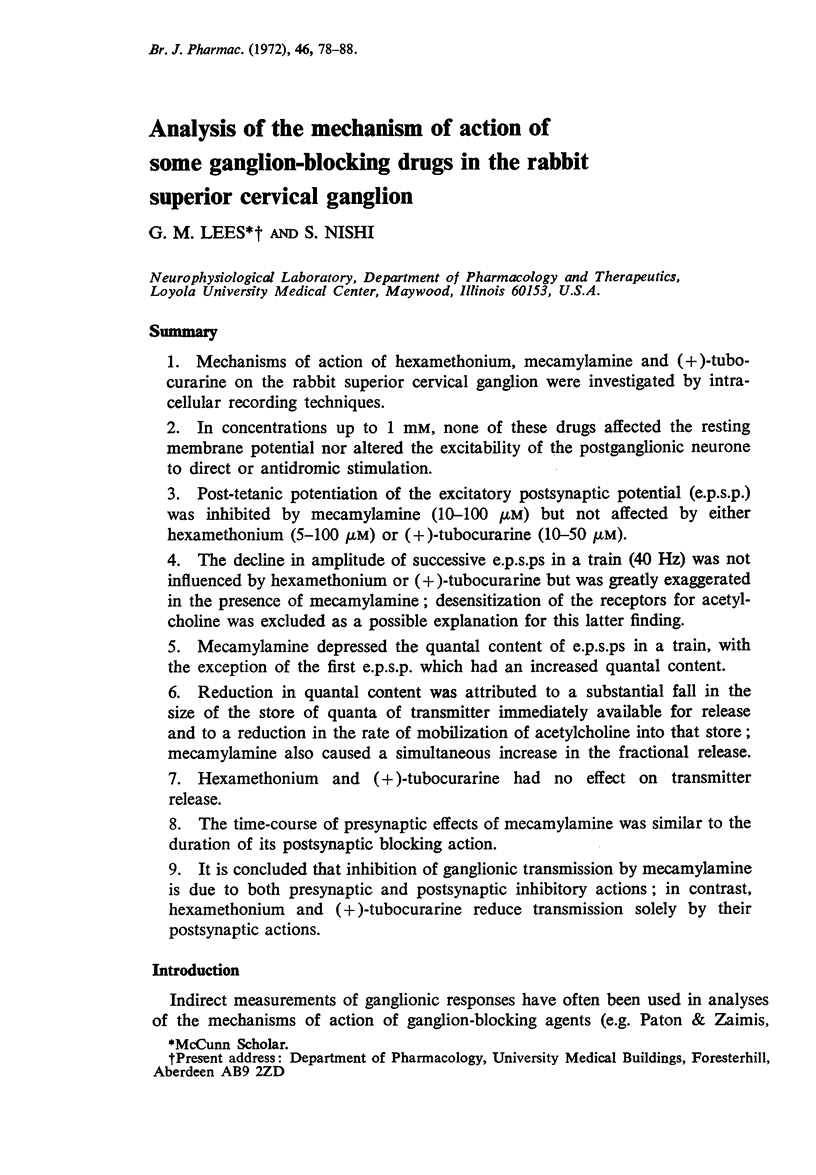
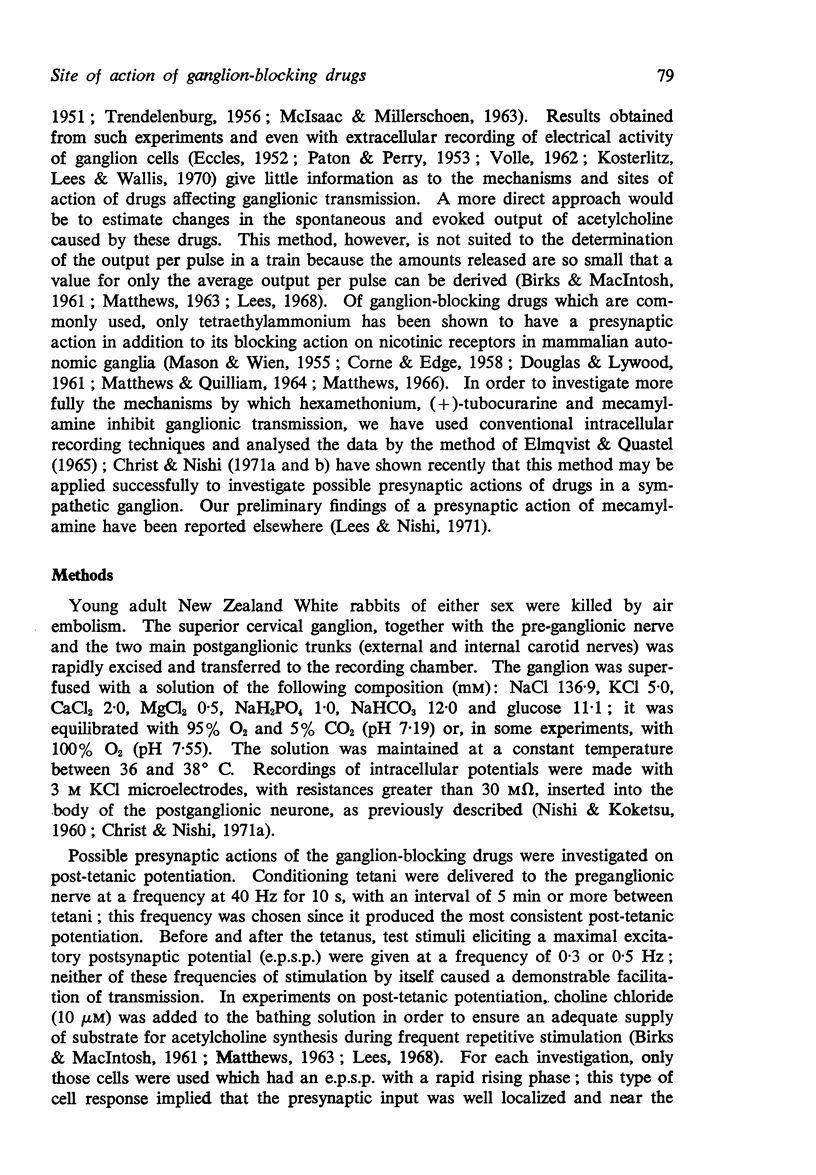
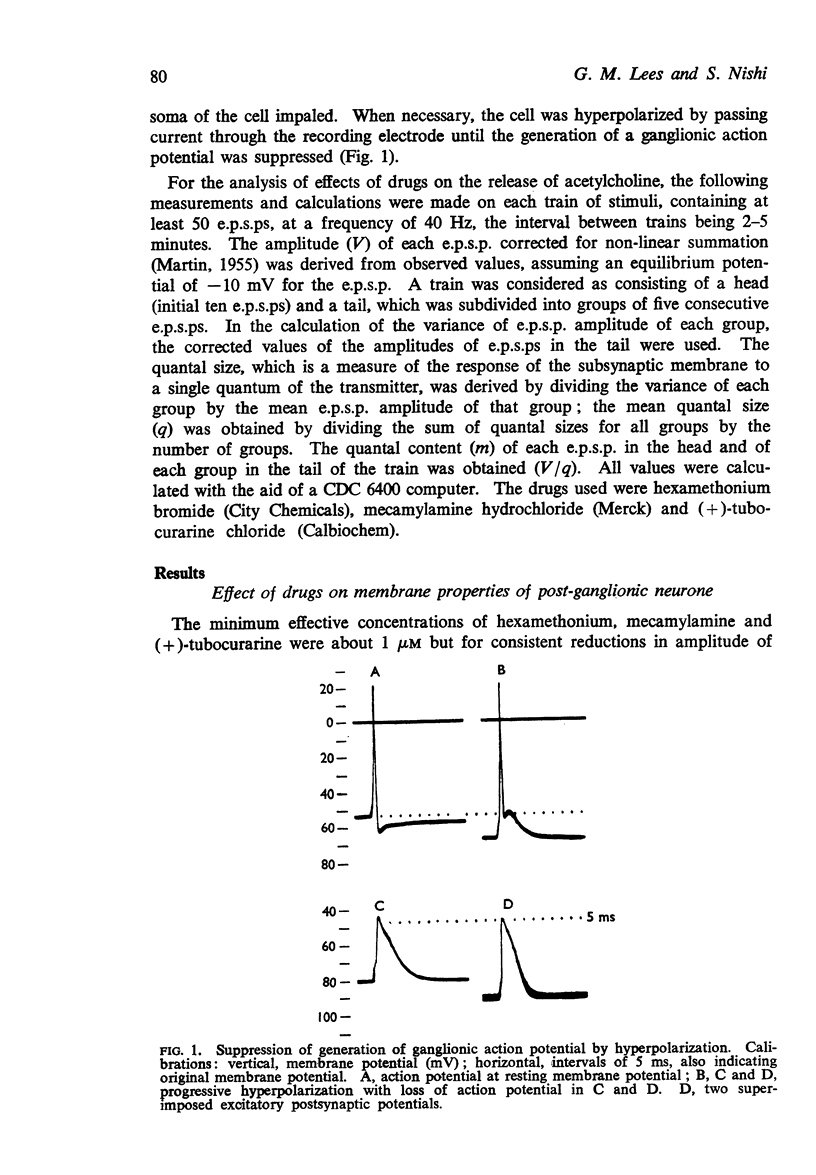
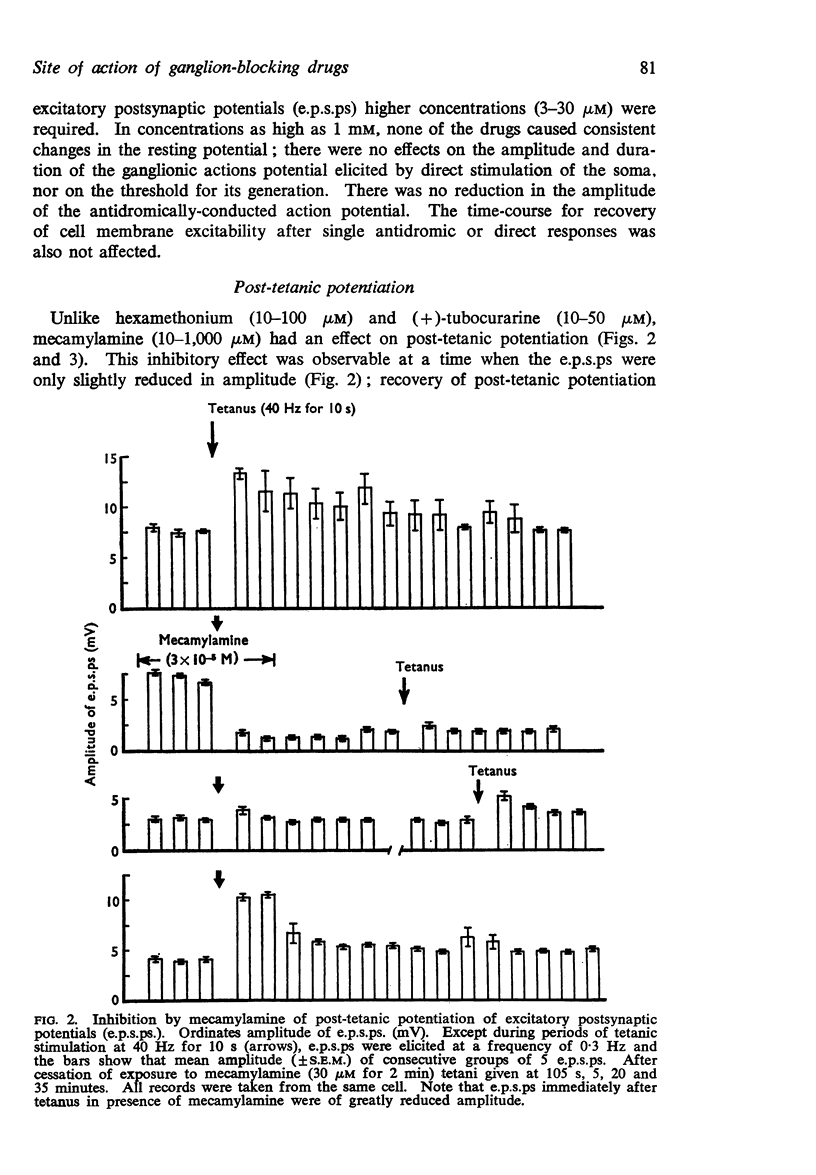
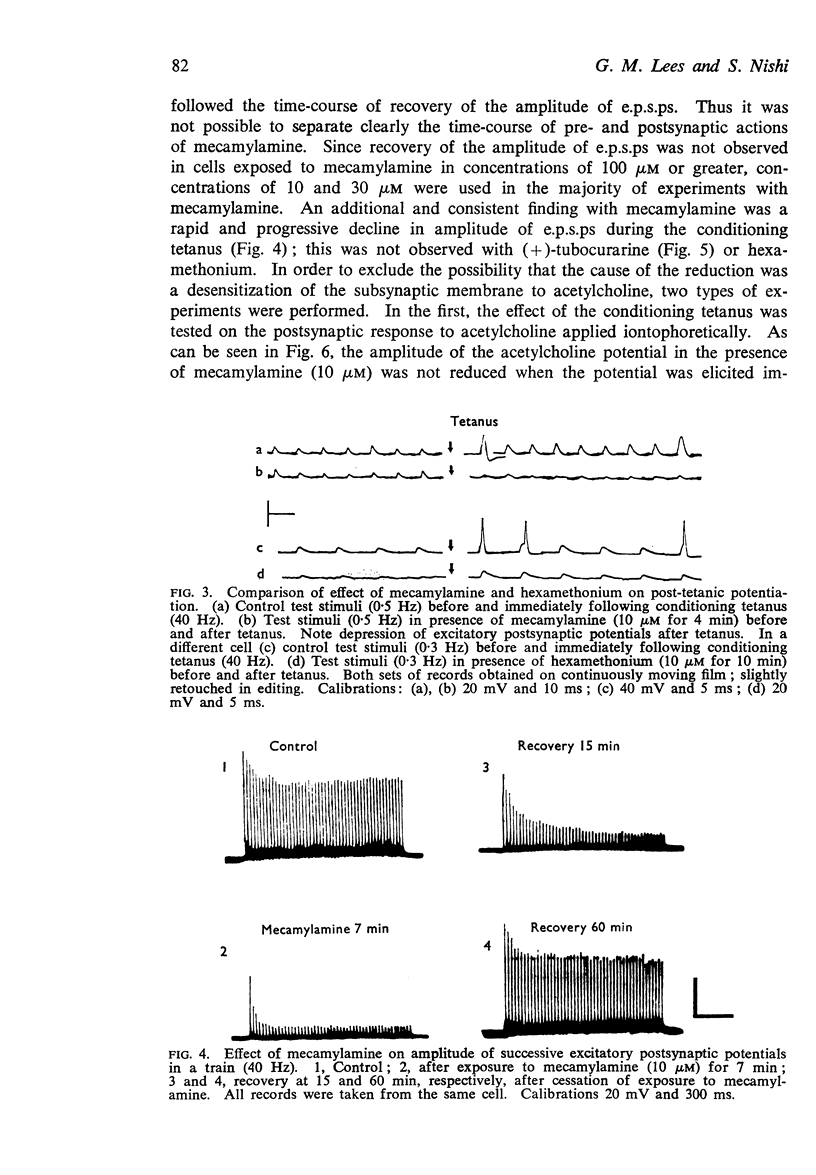

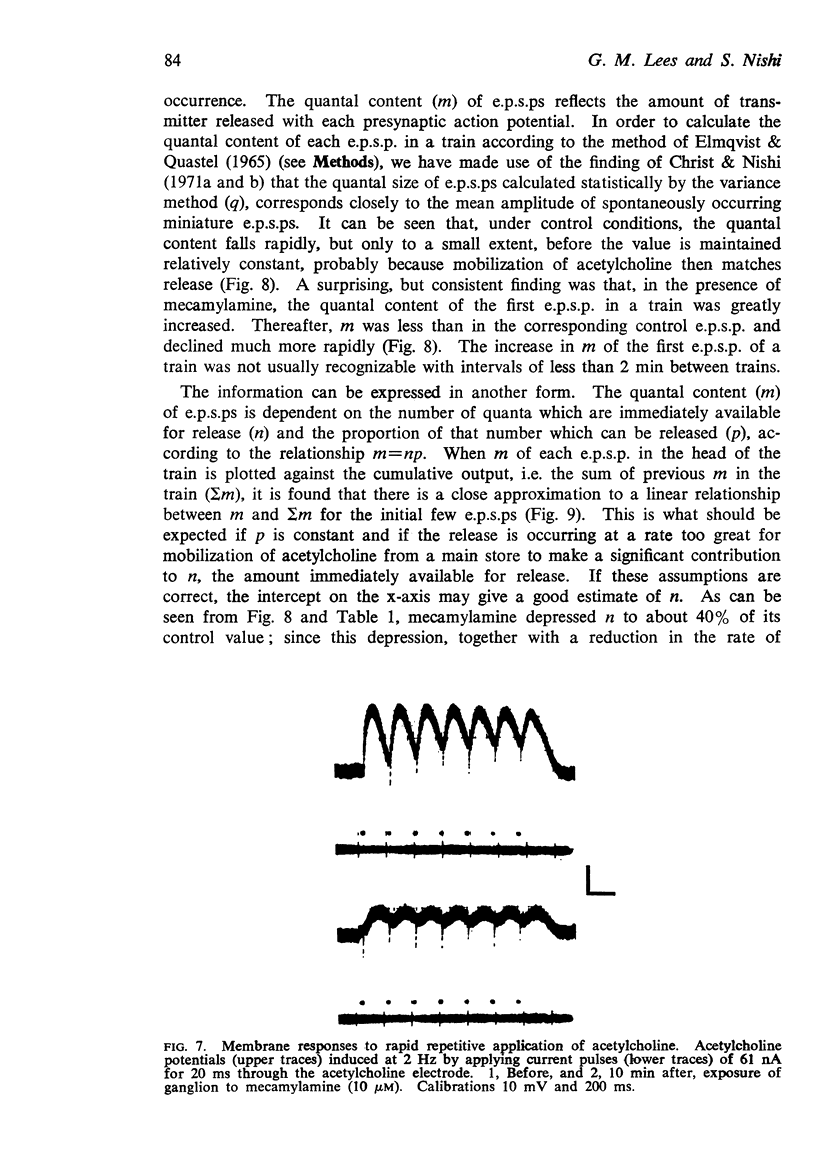
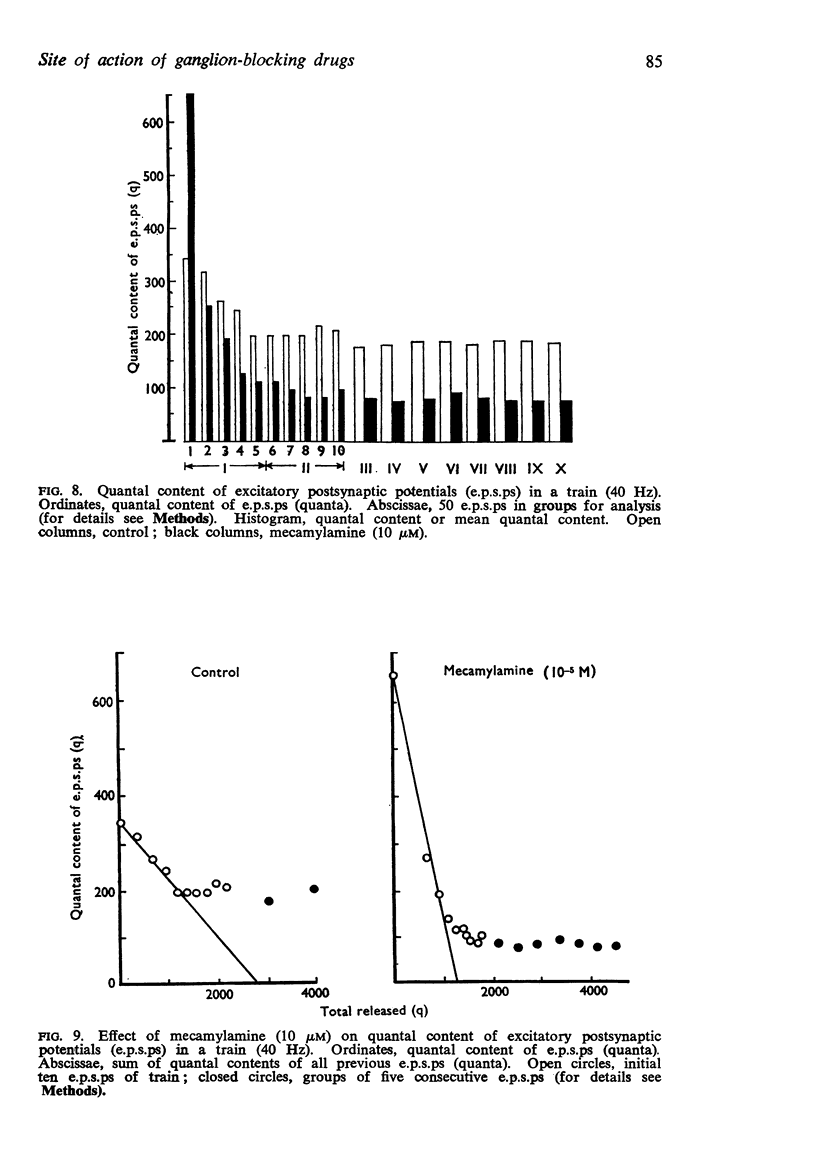
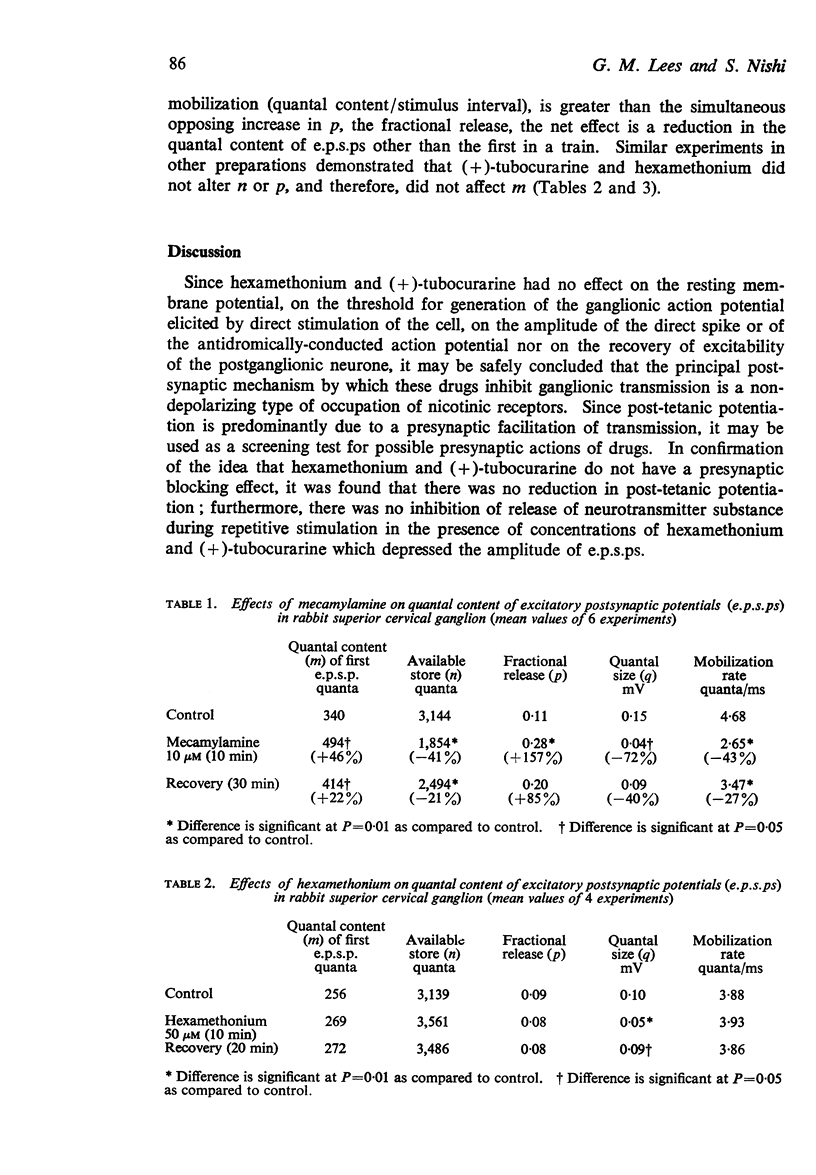
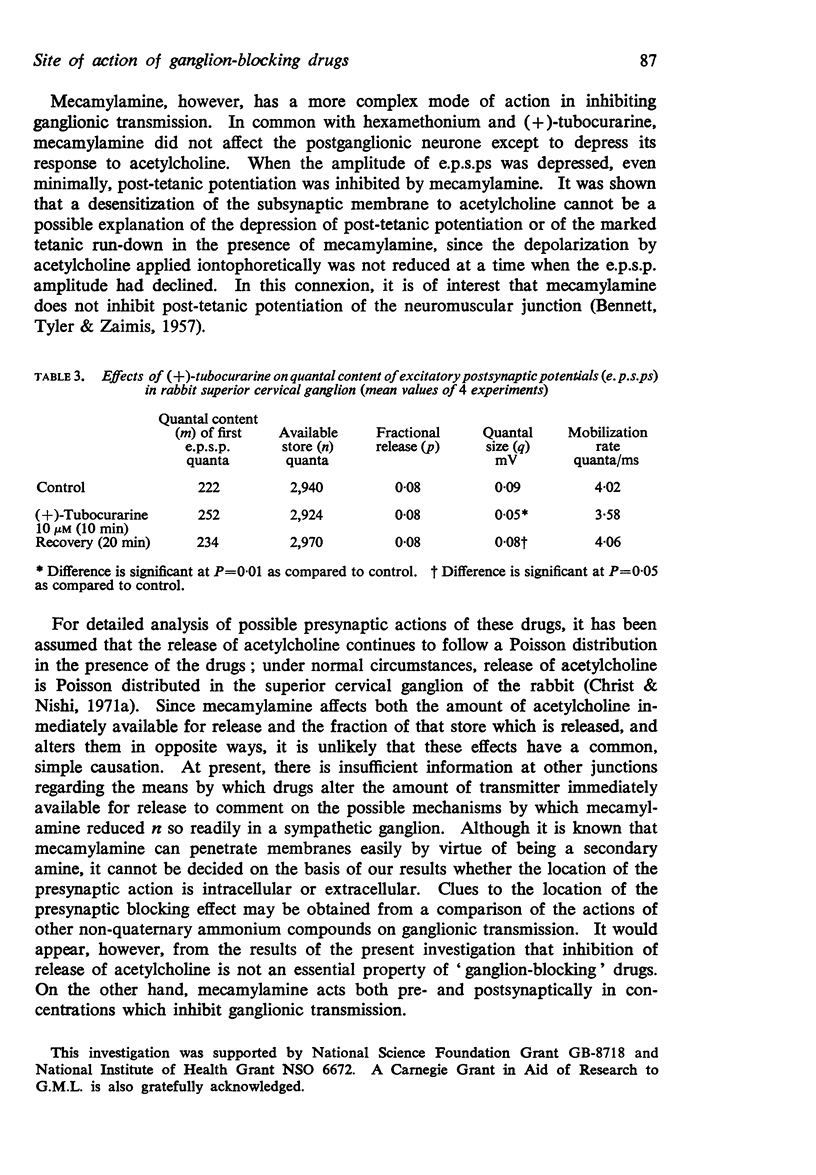
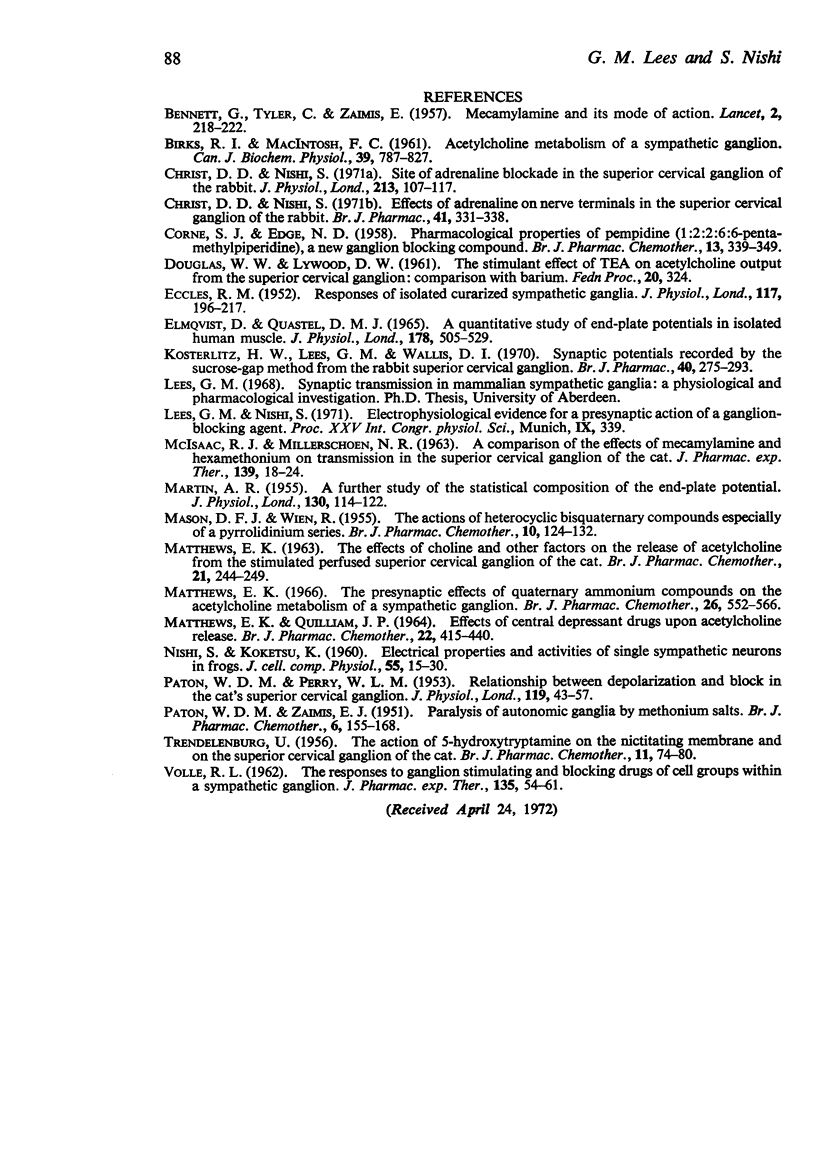
Selected References
These references are in PubMed. This may not be the complete list of references from this article.
- BENNETT G., TYLER C., ZAIMIS E. Mecamylamine and its mode of action. Lancet. 1957 Aug 3;273(6988):218–222. doi: 10.1016/s0140-6736(57)91598-2. [DOI] [PubMed] [Google Scholar]
- CORNE S. J., EDGE N. D. Pharmacological properties of pempidine (1:2:2:6:6-pentamethylpiperidine), a new ganglion-blocking compound. Br J Pharmacol Chemother. 1958 Sep;13(3):339–349. doi: 10.1111/j.1476-5381.1958.tb00915.x. [DOI] [PMC free article] [PubMed] [Google Scholar]
- Christ D. D., Nishi S. Effects of adrenaline on nerve terminals in the superior cervical ganglion of the rabbit. Br J Pharmacol. 1971 Feb;41(2):331–338. doi: 10.1111/j.1476-5381.1971.tb08033.x. [DOI] [PMC free article] [PubMed] [Google Scholar]
- Christ D. D., Nishi S. Site of adrenaline blockade in the superior cervical ganglion of the rabbit. J Physiol. 1971 Feb;213(1):107–117. doi: 10.1113/jphysiol.1971.sp009371. [DOI] [PMC free article] [PubMed] [Google Scholar]
- ECCLES R. Responses of isolated curarized sympathetic ganglia. J Physiol. 1952 Jun;117(2):196–217. doi: 10.1113/jphysiol.1952.sp004740. [DOI] [PMC free article] [PubMed] [Google Scholar]
- Elmqvist D., Quastel D. M. A quantitative study of end-plate potentials in isolated human muscle. J Physiol. 1965 Jun;178(3):505–529. doi: 10.1113/jphysiol.1965.sp007639. [DOI] [PMC free article] [PubMed] [Google Scholar]
- Kosterlitz H. W., Lees G. M., Wallis D. I. Synaptic potentials recorded by the sucrose-gap method from the rabbit superior cervical ganglion. Br J Pharmacol. 1970 Oct;40(2):275–293. doi: 10.1111/j.1476-5381.1970.tb09921.x. [DOI] [PMC free article] [PubMed] [Google Scholar]
- MARTIN A. R. A further study of the statistical composition on the end-plate potential. J Physiol. 1955 Oct 28;130(1):114–122. doi: 10.1113/jphysiol.1955.sp005397. [DOI] [PMC free article] [PubMed] [Google Scholar]
- MASON D. F., WIEN R. The actions of heterocyclic bisquaternary compounds, especially of a pyrrolidinium series. Br J Pharmacol Chemother. 1955 Mar;10(1):124–132. doi: 10.1111/j.1476-5381.1955.tb00070.x. [DOI] [PMC free article] [PubMed] [Google Scholar]
- MATTHEWS E. K., QUILLIAM J. P. EFFECTS OF CENTRAL DEPRESSANT DRUGS UPON ACETYLCHOLINE RELEASE. Br J Pharmacol Chemother. 1964 Apr;22:415–440. doi: 10.1111/j.1476-5381.1964.tb02047.x. [DOI] [PMC free article] [PubMed] [Google Scholar]
- MATTHEWS E. K. THE EFFECTS OF CHOLINE AND OTHER FACTORS ON THE RELEASE OF ACETYLCHOLINE FROM THE STIMULATED PERFUSED SUPERIOR CERVICAL GANGLION OF THE CAT. Br J Pharmacol Chemother. 1963 Oct;21:244–249. doi: 10.1111/j.1476-5381.1963.tb01523.x. [DOI] [PMC free article] [PubMed] [Google Scholar]
- Matthews E. K. The presynaptic effects of quaternary ammonium compounds on the acetylcholine metabolism of a sympathetic ganglion. Br J Pharmacol Chemother. 1966 Mar;26(3):552–566. doi: 10.1111/j.1476-5381.1966.tb01836.x. [DOI] [PMC free article] [PubMed] [Google Scholar]
- NISHI S., KOKETSU K. Electrical properties and activities of single sympathetic neurons in frogs. J Cell Comp Physiol. 1960 Feb;55:15–30. doi: 10.1002/jcp.1030550104. [DOI] [PubMed] [Google Scholar]
- PATON W. D. M., PERRY W. L. M. The relationship between depolarization and block in the cat's superior cervical ganglion. J Physiol. 1953 Jan;119(1):43–57. doi: 10.1113/jphysiol.1953.sp004827. [DOI] [PMC free article] [PubMed] [Google Scholar]
- PATON W. D. M., ZAIMIS E. J. Paralysis of autonomic ganglia by methonium salts. Br J Pharmacol Chemother. 1951 Mar;6(1):155–168. doi: 10.1111/j.1476-5381.1951.tb00631.x. [DOI] [PMC free article] [PubMed] [Google Scholar]
- TRENDELENBURG U. The action of 5-hydroxytryptamine on the nictitating membrane and on the superior cervical ganglion of the cat. Br J Pharmacol Chemother. 1956 Mar;11(1):74–80. doi: 10.1111/j.1476-5381.1956.tb01031.x. [DOI] [PMC free article] [PubMed] [Google Scholar]
- VOLLE R. L. The responses to ganglionic stimulating and blocking drugs of cell groups within a sympathetic ganglion. J Pharmacol Exp Ther. 1962 Jan;135:54–61. [PubMed] [Google Scholar]


